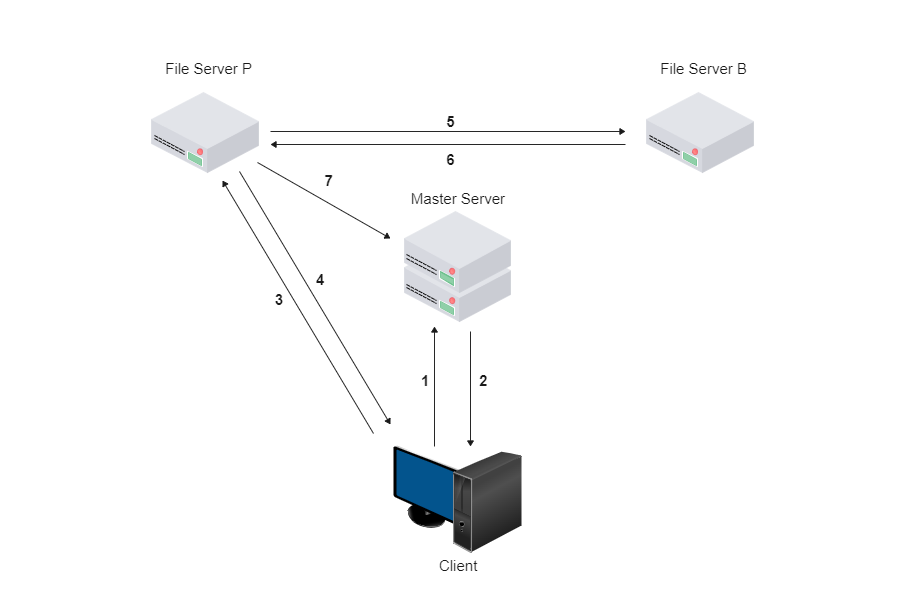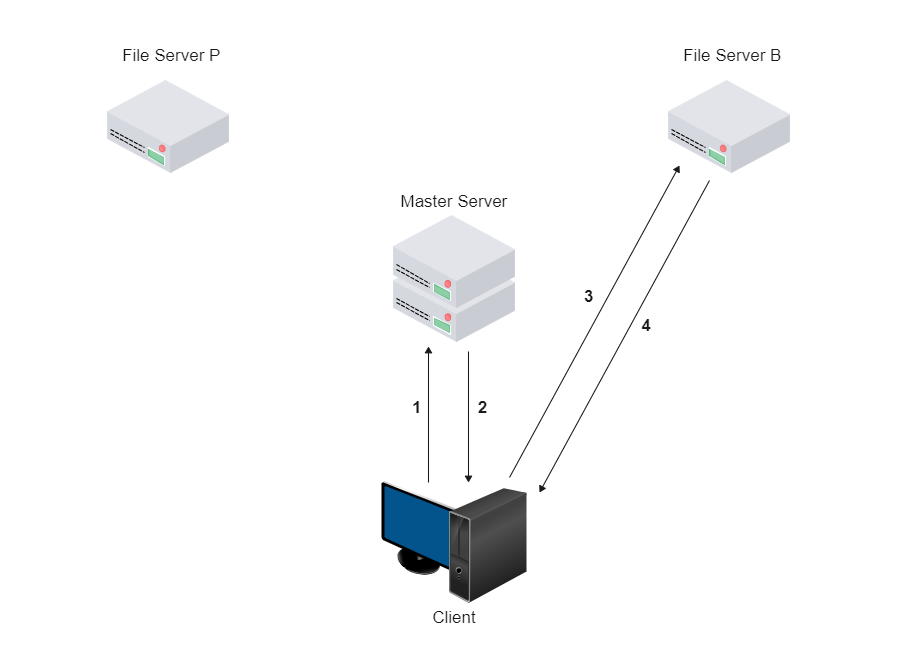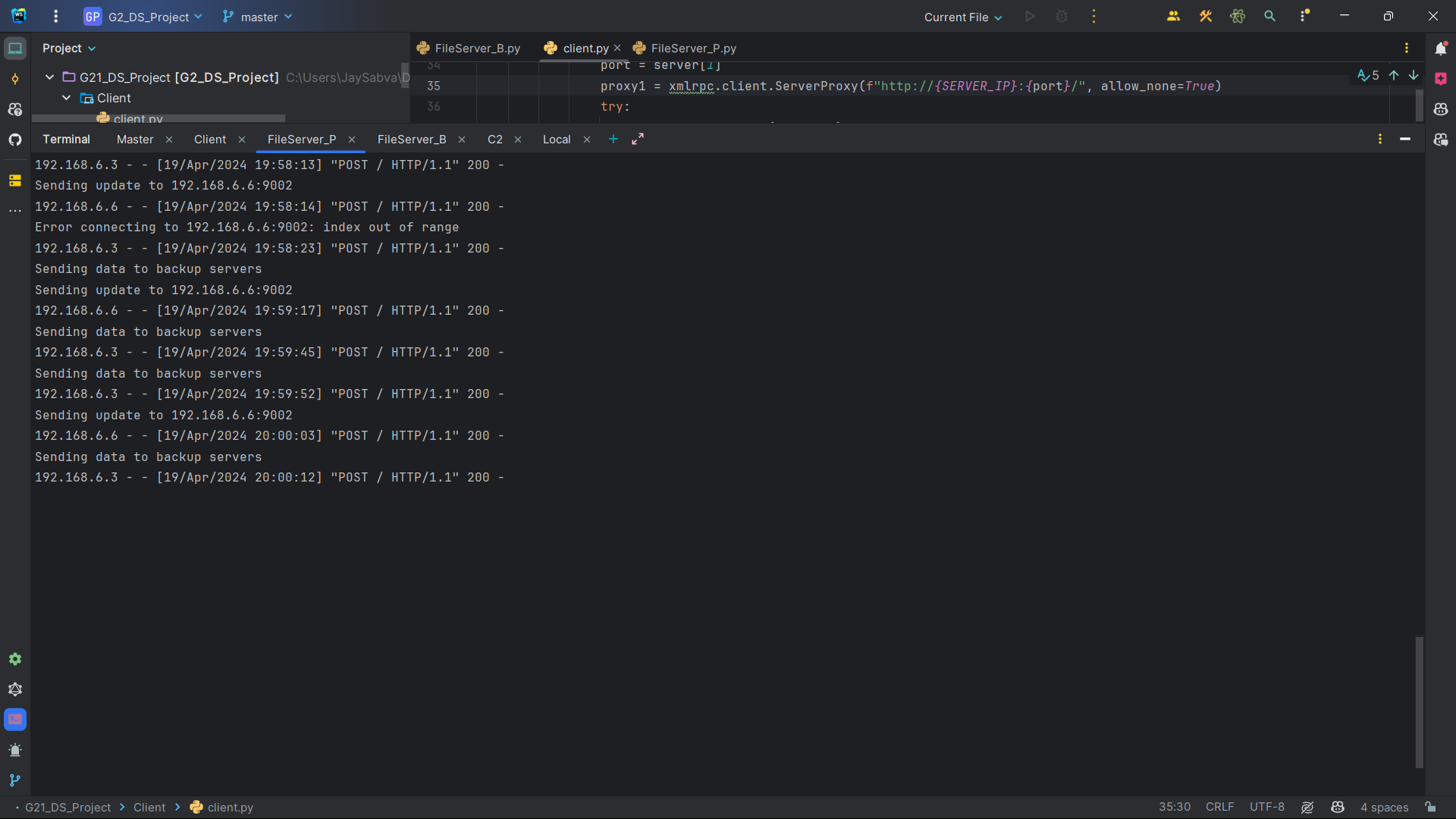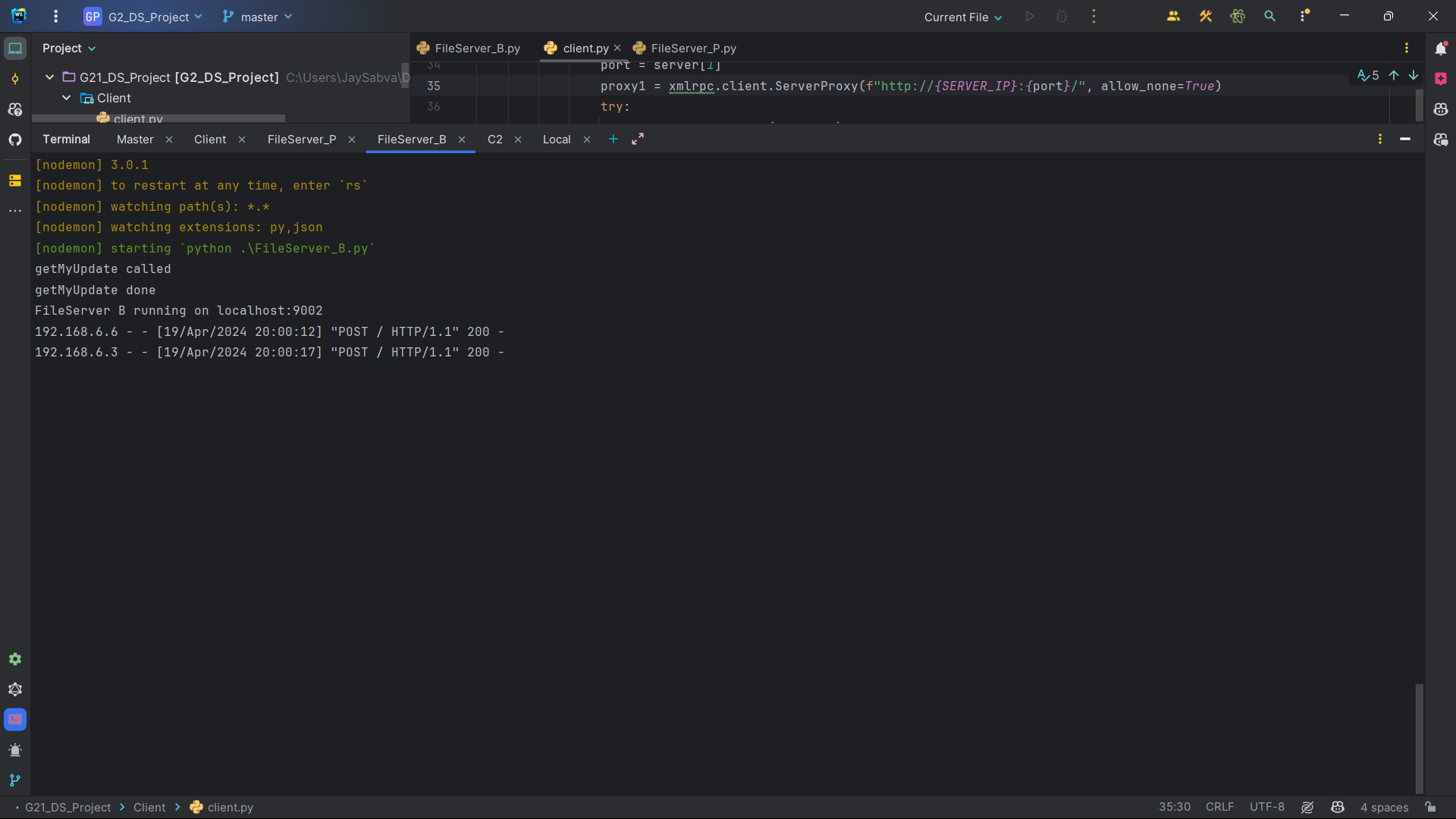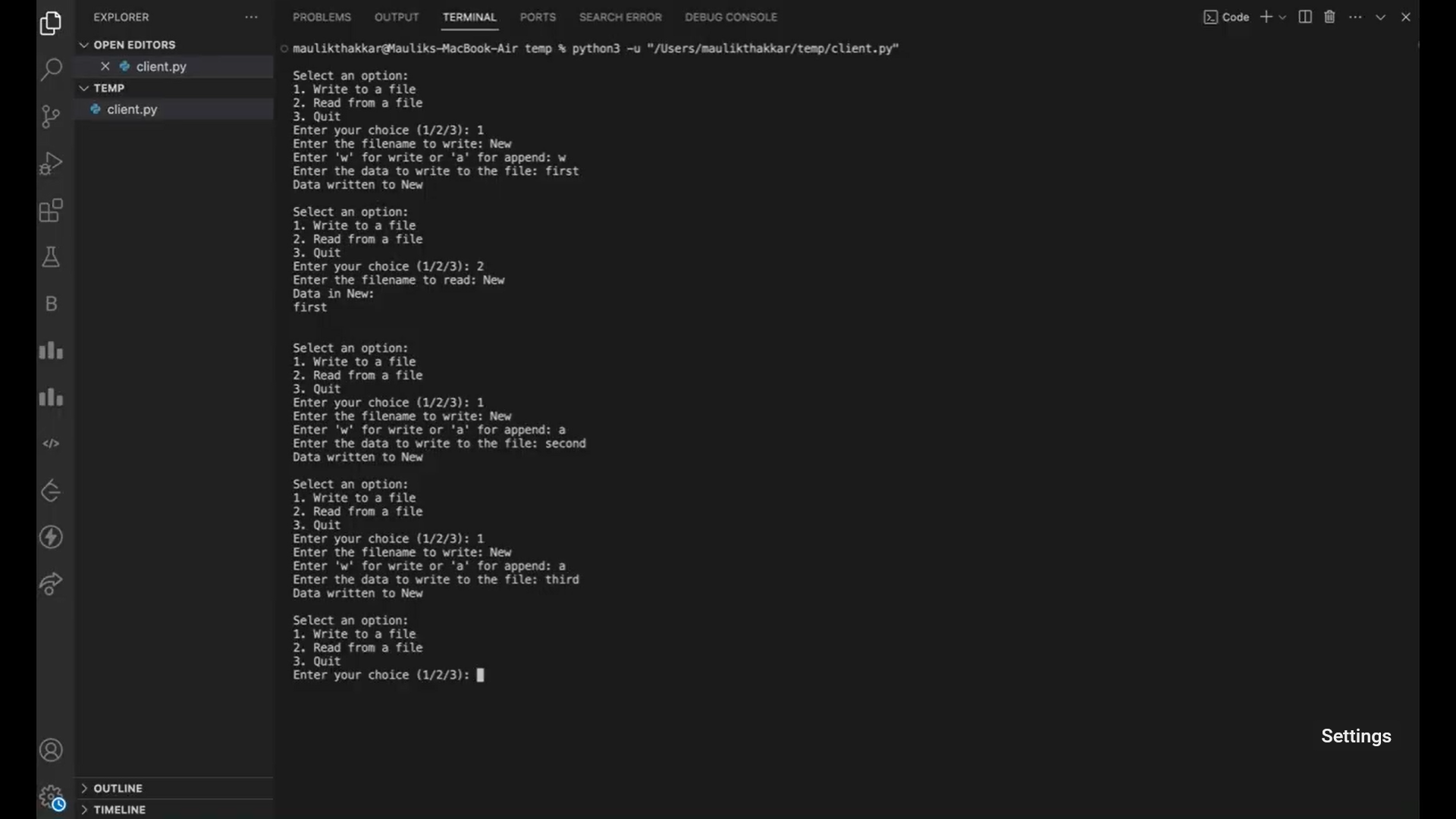This project implements a system for remote file operations, allowing clients to read from and write to files stored on remote servers. The system utilizes distributed architecture to ensure data integrity and availability.
- Introduction
- System Overview
- Implementation Details
- Instructions to Run
- Demo
- Screenshots
- Contributors
- License
This project, developed as part of the IT559 - Distributed Systems course, aims to provide a robust system for remote file operations. It includes components such as a Master Server, Primary File Server, and Backup File Server, each responsible for specific tasks in the file management process.
The system architecture consists of the following main components:
- Master Server: Coordinates file operations, manages locks, and maintains metadata about servers and files stored.
- Primary File Server: Handles file read and write operations for the primary copy of files.
- Backup File Server: Stores backup copies of files and synchronizes with the primary server to ensure data integrity.
The implementation is based on the concept of Remote Procedure Call (RPC) for communication between different components of the system. The system utilizes a primary-backup protocol to ensure sequential consistency and data reliability.
For detailed implementation information, refer to the Project Documentation.
- Ensure you have Python 3.x installed on your system.
- Make sure you have the necessary permissions to run the servers and client application.
- Clone this repository to your local machine:
git clone https://github.com/JaySabva/IT559-G2_Remote_File_Operation.git
- Install the required dependencies using pip:
pip install openpyxl xmlrpc
- Master Server:
- Navigate to the
Masterdirectory:cd Master - Open the
Master.pyfile and set thehostIDvariable:hostID = "<your-ip-address>" # Set the host IP address here (else set it as localhost)
- Run the Master Server:
python Master.py
- Primary File Server:
- Navigate to the
FileServer_Pdirectory:cd FileServer_P - Open the
fileserver_P.pyfile and set thehostIDvariable:hostID = "<your-ip-address>" # Set the host IP address here (else set it as localhost)
- Run the Primary File Server:
python Fileserver_P.py
- Backup File Server:
- Navigate to the
FileServer_Bdirectory:cd FileServer_B - Open the
fileserver_B.pyfile and set thehostIDvariable:hostID = "<your-ip-address>" # Set the host IP address here (else set it as localhost)
- Run the Backup File Server:
python fileserver_B.py
- Client:
- Navigate to the
Clientdirectory:cd Client - Open the
client.pyfile and set thehostIDvariable:SERVER_IP = "<server's-ip-address>" # Set the host IP address here (else set it as localhost) right now, we have hardcoded this ip variables.
- Run the client application:
python client.py
- Upon running the client application, you'll be prompted with options to perform file operations.
- Choose the appropriate option to write to or read from files stored on the remote servers.
- Follow the on-screen instructions to interact with the system.
- For a demonstration of the project in action, check out the YouTube demo here.
- Upadhyay Meet Shaileshbhai
- Sabva Jay Dilipbhai
- Thakkar Maulik Mukeshbhai

